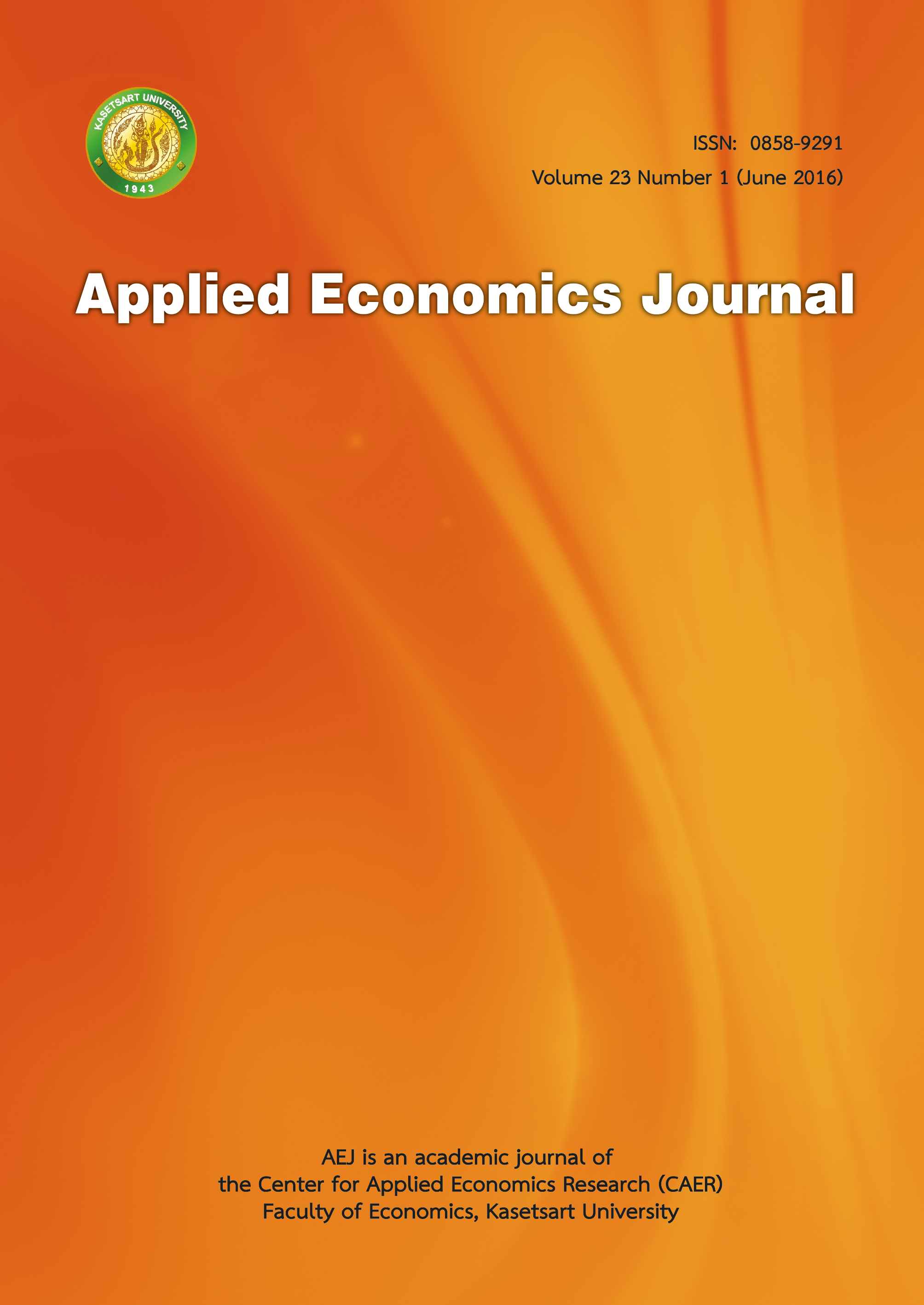Asset Pricing with Idiosyncratic Shocks
Main Article Content
Abstract
This study shows the relationship between idiosyncratic shocks and expected returns on stock regarding theoretical and empirical results. The dynamic stochastic general equilibrium is derived from idiosyncratic stochastic productivity level in production function of heterogenous firms to come up with a new asset pricing model. Given any state , the main finding states that expected stock returns depends on the rate of time preference, depreciation rate, capital share, expected idiosyncratic productivity level at time , the percentage deviation of capital from steady state at time , and the percentage deviation of labor from steady state at time . In fact, expected idiosyncratic productivity level, expected capital, and expected labor are the determinant factors that affect on expected stock returns. Eventually, expected idiosyncratic stochastic productivity level is positively related to expected stock returns similar to expected labor. In contrast, expected capital has a negative effect on expected stock returns.
Article Details
How to Cite
Srisuksai, P., & Vanitchar, V. (2016). Asset Pricing with Idiosyncratic Shocks. Asian Journal of Applied Economics, 23(1), 35–58. retrieved from https://so01.tci-thaijo.org/index.php/AEJ/article/view/62213
Section
Research Articles
The paper is published under CC BY-NC-ND, in which the article is freely downloaded and shared in its original form non-commercially and its citation details are identified.


